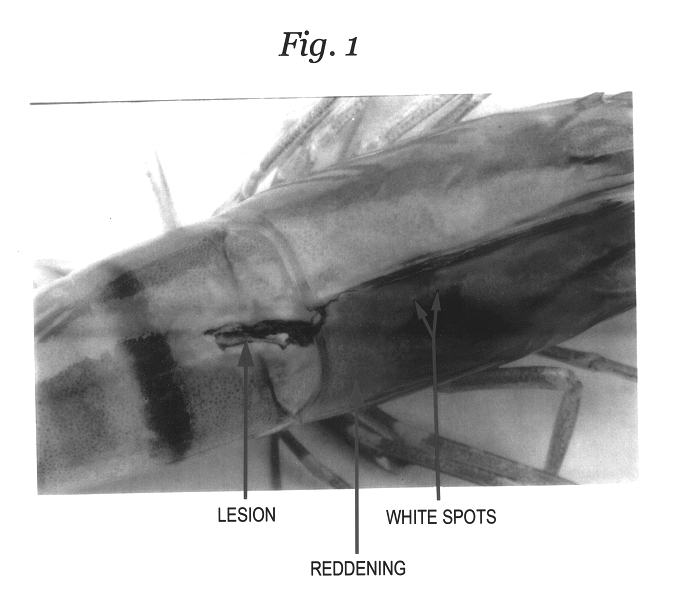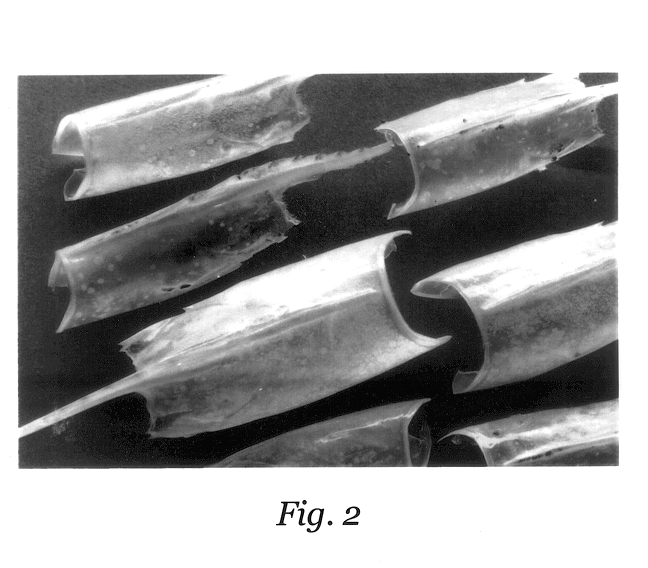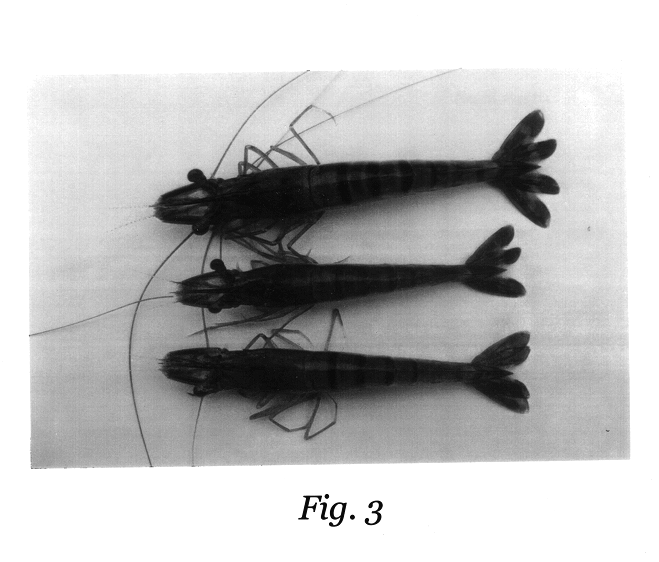Composition for treating white spot syndrome virus (WSSV) infected tiger shrimp penaeus monodon and a process for preparation thereof
a technology of white spot syndrome virus and penaeus monodon, which is applied in the directions of biocide, plant/algae/fungi/lichens ingredients, drug compositions, etc., can solve the problems of extracts that have not been tested on wssv, heavy mortality and financial losses, and heavy mortality and revenue loss to farmers
- Summary
- Abstract
- Description
- Claims
- Application Information
AI Technical Summary
Benefits of technology
Problems solved by technology
Method used
Image
Examples
example 1
Tender leaves of Lantena camera (200 g), Aegle marmelos (100 g) Ocimum sanctum (100 g), Mimosa pudica (75 g), Cynodon dactylon (50 g), Curcuma longa (50 g) and Allium sativum (25 g) were used to prepare the aqueous extract. Freshly collected leaves of the above mentioned plants in the quantities shown within parentheses were mixed and washed thoroughly with distilled water. They were ground to a fine paste in a warning blender using required volume of distilled water. Final volume of the extract was made to 1 liter by adding required volume of distilled water and mixed well. The extract was passed through a bolting silk of 0.5 mm mesh to remove large particles. The example illustrates the method for the preparation of the stock aqueous extract of the leaves.
example 2
White spot syndrome virus (WSSV) infected shrimps were collected from a shrimp farm located in South Goa. Penaeus monodon (tiger shrimp) weighing on an average, 20 g was chosen for testing. Infection on the shrimps was decided based on clinical as well as behavioural sign, such as white spots on the inner surface of carapace, red colouration on the cephalothorax and some appendages, loose cuticle, lesions on the body, swollen gills, lack of feeding, sluggish movements, tendency to swim inactively along the periphery of the ponds, etc. Shrimps were caught using a cast net and infected ones were carefully removed to large plastic buckets containing the pond water. They were brought to the laboratory under aeration. In the laboratory the specimens were transferred carefully into a rectangular fibreglass tanks (1 m.sup.3 capacity) containing sand filtered continuously aerated seawater of salinity 30 ppt. This examples illustrates the collection and acclimatisation to laboratory conditio...
example 3
Three rectangular fibreglass tanks (capacity 1 m.sup.3), each containing 500 liters of sand filtered seawater of salinity 30 ppt and pH 7.8, having continuous aeration was kept ready. Twenty infected shrimps were transferred with care into each tank. The shrimps were fed a combination of fresh squids and mussels at the rate of 8% of the total body weight in the evening after removing excess feed and moults. Required volume of the stock extract was added in one tank to make 5 ppm concentration. The concentration of extract in the second tank was made to 15 ppm. The third tank was kept as the control without adding the extract. Fifty percent of the water was exchanged every day including the control tank and concentration of extract in the tanks were adjusted accordingly.
PUM
 Login to View More
Login to View More Abstract
Description
Claims
Application Information
 Login to View More
Login to View More - R&D
- Intellectual Property
- Life Sciences
- Materials
- Tech Scout
- Unparalleled Data Quality
- Higher Quality Content
- 60% Fewer Hallucinations
Browse by: Latest US Patents, China's latest patents, Technical Efficacy Thesaurus, Application Domain, Technology Topic, Popular Technical Reports.
© 2025 PatSnap. All rights reserved.Legal|Privacy policy|Modern Slavery Act Transparency Statement|Sitemap|About US| Contact US: help@patsnap.com



